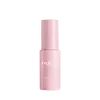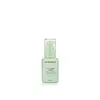What's inside
What's inside
 Key Ingredients
Key Ingredients

 Benefits
Benefits

 Ingredients Side-by-side
Ingredients Side-by-side

Water
Skin ConditioningTetrahexyldecyl Ascorbate
AntioxidantGlycerin
HumectantPhenoxyethanol
PreservativeCarthamus Tinctorius Seed Oil
MaskingAmmonium Acryloyldimethyltaurate/Vp Copolymer
Dipalmitoyl Hydroxyproline
Skin ConditioningTocopheryl Acetate
AntioxidantTetrasodium Glutamate Diacetate
Carbomer
Emulsion StabilisingPolysorbate 20
EmulsifyingSodium Metabisulfite
AntioxidantPanthenol
Skin ConditioningFerulic Acid
AntimicrobialEthylhexylglycerin
Skin ConditioningSodium Hydroxide
BufferingCamellia Sinensis Leaf Extract
AntimicrobialWater, Tetrahexyldecyl Ascorbate, Glycerin, Phenoxyethanol, Carthamus Tinctorius Seed Oil, Ammonium Acryloyldimethyltaurate/Vp Copolymer, Dipalmitoyl Hydroxyproline, Tocopheryl Acetate, Tetrasodium Glutamate Diacetate, Carbomer, Polysorbate 20, Sodium Metabisulfite, Panthenol, Ferulic Acid, Ethylhexylglycerin, Sodium Hydroxide, Camellia Sinensis Leaf Extract
Water
Skin ConditioningAloe Barbadensis Leaf Juice
Skin ConditioningGlycerin
Humectant3-O-Ethyl Ascorbic Acid
Skin ConditioningHelianthus Annuus Seed Oil
EmollientLimnanthes Alba Seed Oil
Skin ConditioningCalophyllum Inophyllum Seed Oil
AntimicrobialOlea Europaea Fruit Oil
MaskingFerulic Acid
AntimicrobialDisteardimonium Hectorite
StabilisingPolyglyceryl-2 Isostearate
EmulsifyingPolyglyceryl-6 Polyricinoleate
EmulsifyingAzelaic Acid
BufferingDipotassium Glycyrrhizate
HumectantRosa Canina Fruit Oil
EmollientPersea Gratissima Oil
Skin ConditioningSodium Citrate
BufferingCitric Acid
BufferingSorbitol
HumectantXanthan Gum
EmulsifyingAscorbic Acid
AntioxidantColloidal Gold
AntimicrobialGlutathione
Orange Roughy Oil
Skin ConditioningTocopherol
AntioxidantPhenethyl Alcohol
MaskingEthylhexylglycerin
Skin ConditioningWater, Aloe Barbadensis Leaf Juice, Glycerin, 3-O-Ethyl Ascorbic Acid, Helianthus Annuus Seed Oil, Limnanthes Alba Seed Oil, Calophyllum Inophyllum Seed Oil, Olea Europaea Fruit Oil, Ferulic Acid, Disteardimonium Hectorite, Polyglyceryl-2 Isostearate, Polyglyceryl-6 Polyricinoleate, Azelaic Acid, Dipotassium Glycyrrhizate, Rosa Canina Fruit Oil, Persea Gratissima Oil, Sodium Citrate, Citric Acid, Sorbitol, Xanthan Gum, Ascorbic Acid, Colloidal Gold, Glutathione, Orange Roughy Oil, Tocopherol, Phenethyl Alcohol, Ethylhexylglycerin
Ingredients Explained
These ingredients are found in both products.
Ingredients higher up in an ingredient list are typically present in a larger amount.
Ethylhexylglycerin (we can't pronounce this either) is commonly used as a preservative and skin softener. It is derived from glyceryl.
You might see Ethylhexylglycerin often paired with other preservatives such as phenoxyethanol. Ethylhexylglycerin has been found to increase the effectiveness of these other preservatives.
Ferulic Acid is a plant based antioxidant. By fighting free-radicals, ferulic acid can help reduce the formation of fine lines and hyperpigmentation.
When used with Vitamin C, Ferulic Acid has shown to prevent Vitamin C from breaking down. In other words, it acts as a stabilizer.
Ferulic Acid is sometimes used to preserve food. Foods containing Ferulic Acid include: oats, rice, eggplant, citrus.
In medicine, Ferulic Acid is being studied for helping with diabetes, Alzheimer's, and cardiovascular diseases.
Learn more about Ferulic AcidGlycerin is already naturally found in your skin. It helps moisturize and protect your skin.
A study from 2016 found glycerin to be more effective as a humectant than AHAs and hyaluronic acid.
As a humectant, it helps the skin stay hydrated by pulling moisture to your skin. The low molecular weight of glycerin allows it to pull moisture into the deeper layers of your skin.
Hydrated skin improves your skin barrier; Your skin barrier helps protect against irritants and bacteria.
Glycerin has also been found to have antimicrobial and antiviral properties. Due to these properties, glycerin is often used in wound and burn treatments.
In cosmetics, glycerin is usually derived from plants such as soybean or palm. However, it can also be sourced from animals, such as tallow or animal fat.
This ingredient is organic, colorless, odorless, and non-toxic.
Glycerin is the name for this ingredient in American English. British English uses Glycerol/Glycerine.
Learn more about GlycerinWater. It's the most common cosmetic ingredient of all. You'll usually see it at the top of ingredient lists, meaning that it makes up the largest part of the product.
So why is it so popular? Water most often acts as a solvent - this means that it helps dissolve other ingredients into the formulation.
You'll also recognize water as that liquid we all need to stay alive. If you see this, drink a glass of water. Stay hydrated!
Learn more about Water